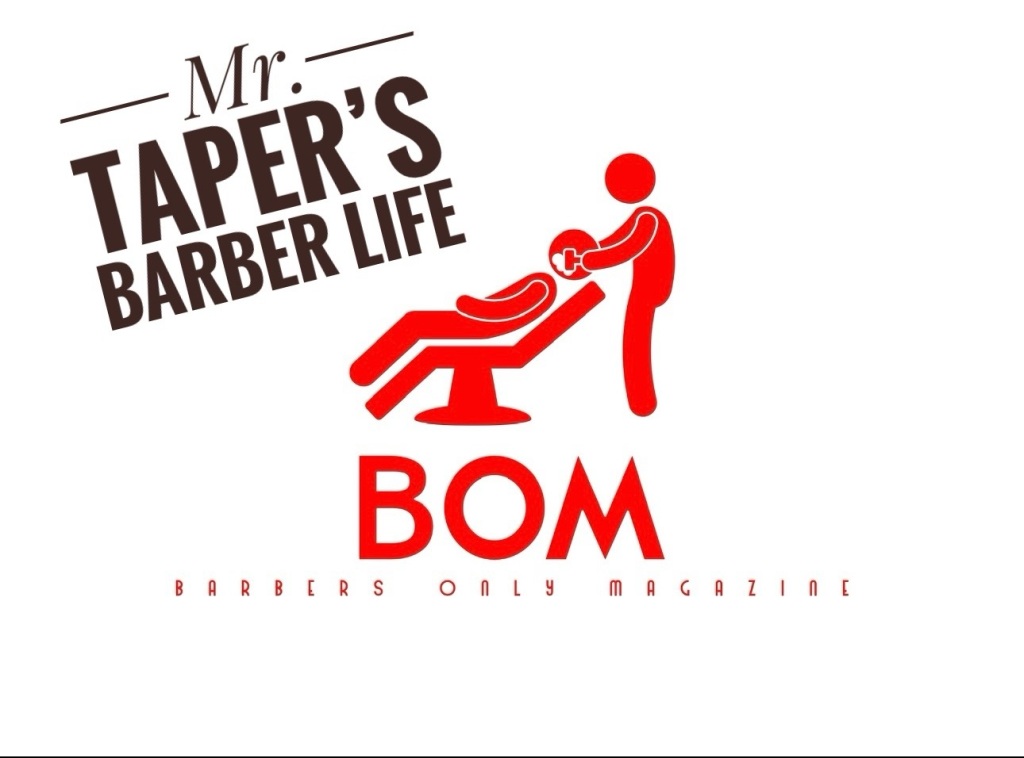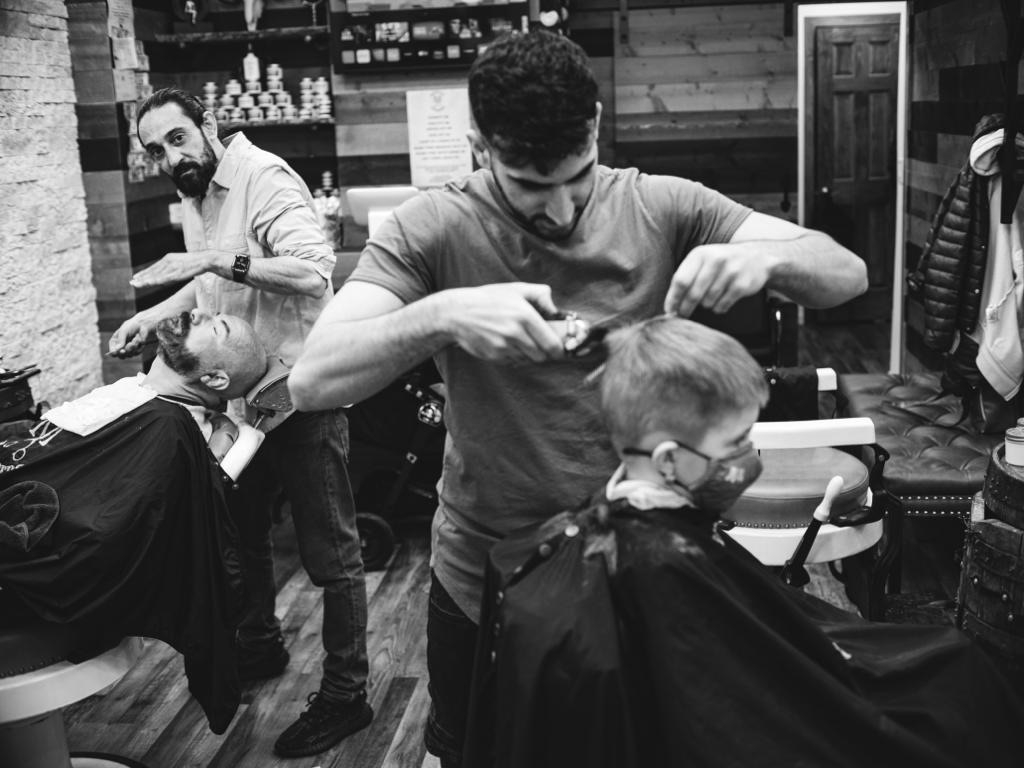

To maintain a neat appearance, someone with a short beard should trim it every 1-2 weeks. This frequency helps to keep the beard looking tidy and well-groomed, preventing any stray hairs from becoming unruly and maintaining a polished look.
When trimming a long, thick beard, the best tools to use include a high-quality beard trimmer with adjustable settings, sharp scissors for detailing, a beard comb to detangle and shape the beard, and beard oil or balm to soften the hair and provide moisture. These tools will help achieve a precise and clean trim for a long, thick beard.
https://podcasts.apple.com/us/podcast/mr-tapers-barber-life/id1678890979?i=1000647933253

Posted by on 2024-03-11
Tax write-offs for barbers can be a great way to save money on taxes. Barbers can take advantage of a variety of deductions and credits to reduce their taxable income and save money. Here are some of the most common tax write-offs for barbers in 2024. 1. Professional Expenses: Barbers can deduct expenses related to […]

Posted by on 2024-01-02
youtube.com/watch
Posted by on 2023-11-13
It is not necessary to trim the mustache separately from the rest of the beard, but some individuals prefer to do so for a more defined look. Trimming the mustache separately allows for more control over its shape and length, ensuring it complements the overall beard style.

The best technique for shaping a beard to achieve a specific style, such as a goatee or a full beard, involves using a combination of trimming, shaping, and detailing. Start by outlining the desired shape with a trimmer, then carefully trim and shape the beard to achieve the desired style. Regular maintenance and touch-ups will help maintain the shape over time.
When trimming a beard for a job interview or formal event, it is important to ensure a clean and well-groomed appearance. Pay attention to detail, such as trimming any stray hairs, shaping the beard neatly, and maintaining a consistent length. Avoid any drastic changes right before the event to prevent any unexpected results.

To prevent ingrown hairs or irritation while trimming a beard, it is essential to prepare the skin and hair properly. Before trimming, wash the beard with a gentle cleanser, exfoliate to remove dead skin cells, and apply a pre-shave oil to soften the hair. Use a sharp blade or trimmer to avoid tugging on the hair, and moisturize the skin after trimming to soothe any irritation.
Some common mistakes to avoid when trimming a beard at home include trimming too much off at once, using dull tools that can cause uneven cuts, neglecting to comb through the beard before trimming, and not following a consistent trimming routine. It is important to take your time, be patient, and follow proper grooming techniques to achieve the desired results without any mishaps.

For individuals with thinning hair, a haircut that works best is one that adds volume and texture to the hair. Layered cuts, such as a long layered bob or a shag haircut, can help create the illusion of thicker hair by removing weight and adding movement. Additionally, incorporating soft waves or curls into the hairstyle can also help to give the appearance of fuller hair. Avoiding blunt cuts or styles that are too short can help prevent the hair from looking even thinner. Styling products such as volumizing mousse or texturizing spray can further enhance the look of thicker hair. Overall, opting for a haircut that adds dimension and body to the hair can be most flattering for those with thinning hair.
When considering haircuts for different face shapes, it is important to take into account the unique features of each individual's facial structure. For example, individuals with a round face shape may benefit from hairstyles that add height and volume to create the illusion of a more elongated face. On the other hand, those with a square face shape may want to opt for softer, layered styles to soften angular features. Heart-shaped faces can be complemented by hairstyles that frame the face and add width at the jawline. Oval face shapes are considered the most versatile and can pull off a wide range of haircuts. Ultimately, consulting with a professional stylist who is knowledgeable about facial shapes and hair textures can help determine the most flattering haircut for each individual.
Barbershops typically do offer beard oil treatments as part of their grooming services. These treatments involve applying specially formulated oils to the beard to moisturize, condition, and promote healthy growth. Beard oil treatments are popular among men looking to maintain a well-groomed appearance and keep their facial hair looking its best. Some barbershops may also offer a variety of beard oil options, including different scents and ingredients to cater to individual preferences. Overall, beard oil treatments are a common service provided by barbershops to help clients achieve a well-maintained and stylish beard.
Barbershops often offer services tailored for special occasions such as weddings or parties. These services may include grooming packages, styling for formal events, beard trims, and haircuts to ensure clients look their best for the occasion. Some barbershops may also provide additional services like hot towel shaves, facials, and hair treatments to help clients achieve a polished and sophisticated look for their special event. Overall, barbershops can be a convenient and reliable option for individuals looking to enhance their appearance for weddings or parties.
Barbers ensure consistency in haircuts across appointments by following a standardized procedure that includes using precise measurements, consistent techniques, and quality tools. They start by consulting with each client to understand their desired style, taking into account factors such as hair texture, face shape, and personal preferences. Barbers then use specialized tools like clippers, scissors, and combs to execute the haircut with accuracy and precision. By adhering to a set of established guidelines and best practices, barbers can maintain consistency in their work, ensuring that each haircut meets the client's expectations and delivers a high level of quality and satisfaction. Additionally, ongoing training and education help barbers stay up-to-date on the latest trends and techniques, further enhancing their ability to provide consistent and reliable service to their clients.
When a client sits in the barber's chair, they have the opportunity to discuss their desired hairstyle with the stylist. During this consultation, the client can request a custom hair design that aligns with their personal preferences and style. The stylist will consider factors such as hair texture, face shape, and current trends to create a unique and tailored look for the client. By communicating openly and clearly with the stylist, the client can ensure that their haircut meets their expectations and reflects their individuality. Whether it's a trendy fade, intricate braids, or a bold color choice, the client can feel confident in requesting a custom hair design during their haircut appointment.